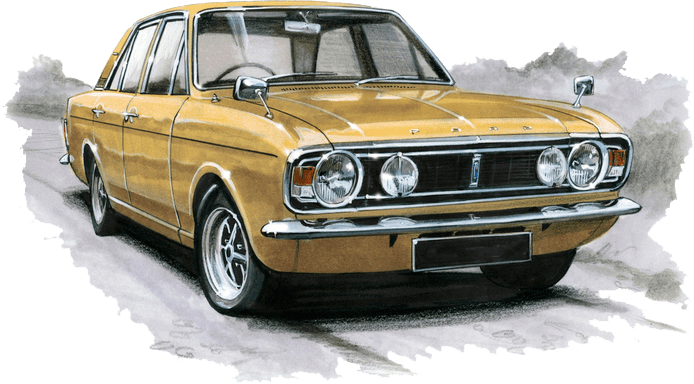
The Ford Cortina is a legendary car that holds a special place in automotive history. It was introduced by the Ford Motor Company in 1962 and quickly became one of the most popular compact cars in the United Kingdom. Known for its reliability, versatility, and affordability, the Cortina went on to have a long and successful production run, spanning multiple generations.
The first generation of the Ford Cortina, commonly referred to as the Mk 1, was produced from 1962 to 1966. It was designed to be a family-friendly car with a spacious interior and a comfortable ride. The Mk 1 Cortina was available in various body styles, including a 2-door saloon, 4-door saloon, and an estate wagon, providing customers with a range of choices to suit their needs.
With its humble beginnings in the 1960s, the Cortina quickly gained popularity and earned a reputation for being a dependable and affordable car. This success led to the development of subsequent generations of the Cortina, each with its own improvements and upgrades.
The second generation, known as the Mk 2, was introduced in 1966 and produced until 1970. This iteration featured a more modern and sleek design, improved performance, and enhanced safety features. The Mk 2 Cortina offered a wider range of engine options, including larger and more powerful engines, giving consumers more choices when it came to performance.
Following the Mk 2, the third generation of the Ford Cortina, the Mk 3, was launched in 1970 and continued until 1976. This version showcased a radical change in design, featuring a more aerodynamic shape and a fashionable, modern look. It also offered a range of innovative features, such as a hatchback variant, which was new to the Cortina lineup.
The fourth generation, known as the Mk 4, was introduced in 1976 and remained in production until 1979. This iteration featured a more streamlined and elegant design, with improved fuel efficiency and handling. It also offered a wider range of engine options and additional convenience features, such as power steering and air conditioning.
The final generation of the Ford Cortina, the Mk 5, was produced from 1979 to 1982. This version marked the end of the Cortina’s production in the United Kingdom. It offered a more modernized design with added safety features, including improved crash protection. However, by this time, competition within the automotive market had intensified, and the Cortina faced stiff competition from other manufacturers.
In total, Ford produced five generations of the Cortina, each with its own unique features and improvements. Although production of the Cortina ended in 1982, its impact on the automotive industry remains significant. The Cortina left behind a lasting legacy as a reliable and iconic car that symbolized British motoring ingenuity. Even though it has been several decades since its last production, the Ford Cortina continues to hold a special place in the hearts of many car enthusiasts who cherish its timeless design and historical significance.